President and CEO of the Center for Human Development
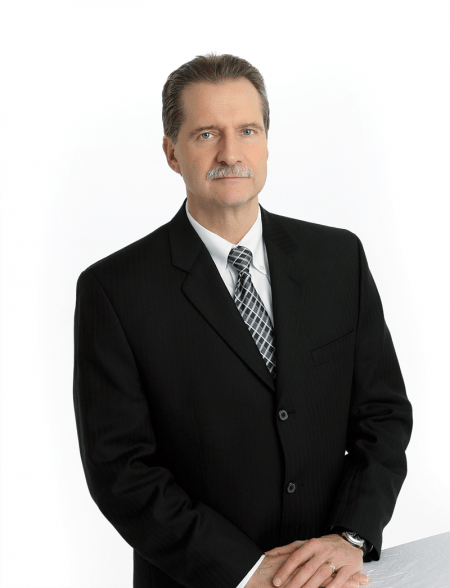 Jim Goodwin says that too many people, especially some in the business community, look upon human services work as a “drain.”
Jim Goodwin says that too many people, especially some in the business community, look upon human services work as a “drain.”
As he uttered that word, he paused for a second, as if to convey that maybe it was too strong a term, but then forged ahead, convinced that it wasn’t.
“They understand that it’s a service, and they see some value in it,” he explained. “But they look at it as an expense, and not as a benefit, not as an investment. They’ll say, ‘I’m glad someone’s doing it, but I wish we didn’t have to pay for it.’ They don’t realize that, in many ways, this is something that benefits their employees, and, therefore, it benefits them as business owners.”
In many respects, Goodwin’s work as president and CEO of the Springfield-based Center for Human Development (CHD) boils down to changing those perceptions he described. And it is because of his success in convincing others that programs in areas ranging from disability resources to the mentoring of young people; from homelessness prevention to post-incarceration services, are, in fact, investments in the community, Goodwin — and, ostensibly, the 1,300-member team he manages — is a member of the Difference Makers Class of 2010.
And Goodwin, who has been with CHD for 30 years, or almost from its beginnings in 1972, repeatedly stressed this element of teamwork as he talked about his organization’s work with children, adults, the elderly, the mentally retarded, the mentally ill, and the chemically addicted — or what he called “probably the most downtrodden people out there.”
Together, members of this team carry out programs that fall into several categories, including:
• Children & Families, which includes such initiatives as Big Brothers Big Sisters, CASA (court-appointed special advocates), an emergency adolescent shelter, foster care, and many others;
• Community Resources and Services, including a disability-resource program, an HIV/AIDS law consortium, and occupational-therapy initiatives;
• Homelessness Prevention, which encompasses a number of programs;
• Mental Health and Addiction Services, which includes child and adolescent mental-health services, outpatient and behavioral-health services, therapy and counseling, and many other programs; and
• Social Enterprises, which are entrepreneurial programs, such as A New Leaf flower shop and Riverbend Furniture, that offer real jobs to people with mental illness, developmental disabilities, or histories of trauma, abuse, or addiction that often keep them from working in traditional settings.
Summing up all of this work within CHD, the largest nonprofit, multi-program human services agency in New England, in a few moments or a few sentences is quite difficult, so Goodwin talked generally about the sum of the dozens of specific programs within the organization.
He said that, collectively, they help to make people with various physical and mental disabilities productive members of society, and not drains, as they are often perceived. “When you help people to the point where they’re employable, where they can work and get things done, and where they no longer look upon themselves as a burden, everyone’s a winner.”
This is accomplished — again, in broad terms — by creating what Goodwin described as “hybrid services” a term he would use repeatedly as he talked with BusinessWest, because it is the cornerstone of CDH’s basic operating philosophy.
And by hybrid, he means a combination of clinical and social services.
“Today, a successful human-services agency has to be able to operate a continuum that deals with the social issues that people are confronted with, along with the medical issues,” he explained. “If you’re providing counseling, psychiatry, and nursing services to people who don’t have a roof over their heads and don’t have enough to eat, you’re not going to get anywhere.”
Goodwin, who brings to his work master’s degrees in both psychology and business — a mix he says has proven quite effective — has a number of accomplishments attached to his name and title of CEO at CHD:
• Fiscally, he’s maintained and improved the financial health of the organization over the past several years, leading the agency to 21% growth and a total surplus of $540,000;
• He’s overseen the development of a sophisticated database that measures treatment and programmatic outcomes and that serves as a reporting tool to funding sources and stakeholders;
• He’s developed an electronic quality-assurance system that allows programs and corporate administrative services to provide performance feedback to each other on a monthly basis;
• He developed supported-housing models in the early 1980s that were duplicated nationally and led to major expansion and distinction for CHD; and
• Overall, he’s developed an extensive system of creative client businesses that produce high-quality products, teach vocational skills, and provide jobs to hundreds of clients in a rehabilitative atmosphere.
But he told BusinessWest that what he considers his greatest accomplishments are building CHD into one of the region’s largest, and best, employers — one with a 95% retention rate among management-position holders, a remarkable number in the human-services industry — and ongoing work to take that word ‘drain’ out of the lexicon when it comes to work his team does.
And the workplace element is vitally important to the equation, he explained, returning, again, to that notion of teamwork.
“You need a highly motivated workforce,” he explained. “You must create a situation where people are excited about the work, and where they understand how it fits in with improving the society that they live in and the city where they live.”
As an example of the work CHD does, how it does it, and why this work is so challenging — and frustrating from a funding perspective — Goodwin pointed to an initiative called PACT, or the Program for Assertive Community Treatment. Unfortunately, this is a program for which the state recently cut funding.
“That’s a program that basically serves people in Springfield and Holyoke who are severely mentally ill and have had tremendous difficulties,” he said. “They’ve been hospitalized many times, incarcerated, that sort of thing, and have been a real strain on the community.
“This program was set up with a team of workers, including a psychiatrist, nursing staff, a vocational specialist, a housing specialist, peer specialists … and these people take the service into the community,” he continued. “They have kept these people functional and outside the institutions — the hospitals and the jails — at an incredible rate. To keep someone in this program for 365 days a year costs $15,000; without it, these people would have four or five major hospitalizations a year, at a cost of $600 to $800 a day. Anyone can do the math, and that’s how it works with all of our programs.”
Recognizing the need to become visible within the community and to allow people to more easily answer the question ‘what does CHD do?’ the agency recently hired a marketing firm to create a new profile-raising brand. It includes the tag line, ‘CHD — good people, good work.’
That’s another way of saying that that this organization — and its long-time CEO — are true Difference Makers.
—George O’Brien



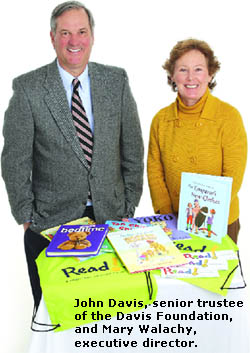
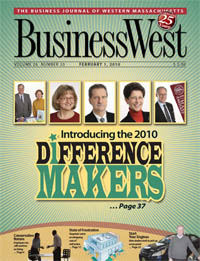
 Their contributions to the community vary, from work to transform elder care to donations of time, energy, and imagination to a host of nonprofit agencies; from philanthropy that far exceeds grant awards to work to improve the lives of some of the most downtrodden constituencies in our society; from multi-faceted efforts to spur economic development in the region to simply inspiring others to find ways to make an impact. They are the Difference Makers Class of 2010. Their stories are powerful and compelling.
Their contributions to the community vary, from work to transform elder care to donations of time, energy, and imagination to a host of nonprofit agencies; from philanthropy that far exceeds grant awards to work to improve the lives of some of the most downtrodden constituencies in our society; from multi-faceted efforts to spur economic development in the region to simply inspiring others to find ways to make an impact. They are the Difference Makers Class of 2010. Their stories are powerful and compelling.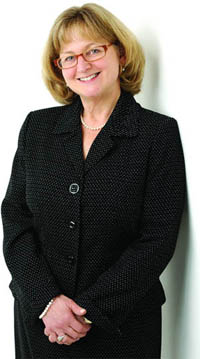
 Shareholder with Shatz, Schwartz and Fentin, P.C.
Shareholder with Shatz, Schwartz and Fentin, P.C.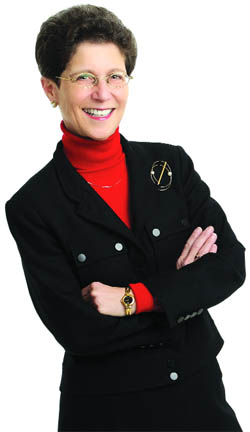 Upon hearing that more than a few of the many people who nominated her for the Difference Makers Class of 2010 wrote that she “transformed care for older adults,” Carol Katz chuckled before saying that she found such language flattering, if also a little excessive.
Upon hearing that more than a few of the many people who nominated her for the Difference Makers Class of 2010 wrote that she “transformed care for older adults,” Carol Katz chuckled before saying that she found such language flattering, if also a little excessive. “And besides,” she continued while explaining this concept and why and how it was incorporated at Loomis, “I certainly didn’t do it all by myself. It’s been a total team effort.”
“And besides,” she continued while explaining this concept and why and how it was incorporated at Loomis, “I certainly didn’t do it all by myself. It’s been a total team effort.”

